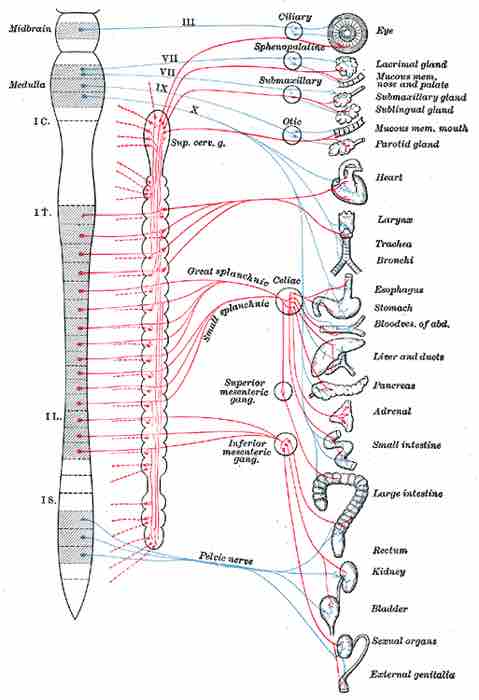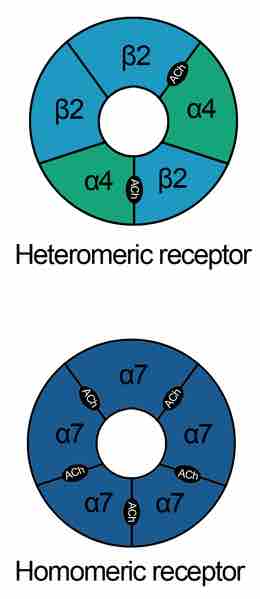The Parasympathetic Nervous System
The parasympathetic nervous system (PSNS, or occasionally PNS) is one of the two main divisions of the autonomic nervous system (ANS). The autonomic nervous system (ANS, or visceral nervous system, or involuntary nervous system) is the part of the peripheral nervous system that acts as a control system, functioning largely below the level of consciousness and controlling visceral functions.
The ANS is responsible for regulating the internal organs and glands, which occurs unconsciously. Its roles include stimulation of rest-and-digest activities that occur when the body is at rest, including sexual arousal, salivation, lacrimation (tears), urination, digestion, and defecation.
Its action is described as being complementary to that of one of the other main branches of the ANS, the sympathetic nervous system, which is responsible for stimulating activities associated with the fight-or-flight response.

Nerve innervation of the autonomic nervous system
The parasympathetic nervous system, shown in blue, is a division of the autonomic nervous system.
The sympathetic and parasympathetic divisions typically function in opposition to each other. This natural opposition is better understood as complementary in nature rather than antagonistic.
The sympathetic nervous system can be considered a quick response, mobilizing system; and the parasympathetic system is a more slowly activated, dampening system.
Parasympathetic Nervous System Functions
A useful acronym to summarize the functions of the parasympathetic nervous system is SLUDD (salivation, lacrimation, urination, digestion, and defecation). The parasympathetic nervous system may also be known as the parasympathetic division.
The parasympathetic nervous system uses chiefly acetylcholine (ACh) as its neurotransmitter, although peptides (such as cholecystokinin) may act on the PSNS as neurotransmitters. The ACh acts on two types of receptors, the muscarinic and nicotinic cholinergic receptors.
Most transmission occurs in two stages. When stimulated, the preganglionic nerve releases ACh at the ganglion, which acts on nicotinic receptors of the postganglionic neurons. The postganglionic nerve then releases ACh to stimulate the muscarinic receptors of the target organ.

Nicotinic acetylcholine receptors
Two different subtypes of nicotinic acetylcholine receptors with alpha and beta subunits are shown. The acetylcholine binding sites are indicated by ACh.